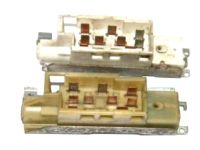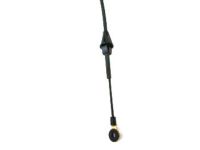Why choose GMPartsGiant
- Large Inventory
The excellent site to buy genuine parts for years has been GMPartsGiant.com. We're the optimal online parts and accessory store for your Oldsmobile Omega. GMPartsGiant.com offers a large parts and accessory inventory to cover all your vehicle's repairs. Feel free to browse through our genuine Oldsmobile Omega parts and accessory catalog to find all your vehicle's needs.
- Fast Shipping Times
All of our Oldsmobile Omega parts and accessories are expedited directly from verified dealers and backed by the manufacturer's warranty. Our experienced team ensures the orders are packed to provide quick transit times. The majority of the orders are shipped out within a couple of business days to get the parts out to you as fast as possible.
- Low Prices
Our low prices say it all. You can rest assured that you will always receive unbeatable prices on OEM Oldsmobile Omega parts. Our giant inventory is beyond compare and has everything you need at an extraordinary value not found anywhere else. Whether you're restoring an old vehicle or upgrading the performance of your Oldsmobile Omega, you can count on the quality of our products without hurting your bank account.
Popular Genuine Oldsmobile Omega Parts
- Engine Parts View More >
- Front Suspension, Steering Parts View More >
- Fuel System, Exhaust, Emission System Parts View More >
- Brakes Parts View More >
- Transmission - Automatic Parts View More >
- Frames, Springs, Shocks, Bumpers Parts View More >
- Front End Sheet Metal, Heater Parts View More >
Shop Genuine Oldsmobile Omega Parts with GMPartsGiant.com
Manufactured and sold between 1973 and 1984, the Oldsmobile Omega represented the most affordable base model from Oldsmobile, sharing its chassis with other GM models. The name "Omega" reflects its place as the final frontier in the Oldsmobile collection, inspired by the last letter of the Greek alphabet. The Omega, spanning three generations, utilized two X platforms, featuring a split body design from the bulkhead to the rear. While sharing the body and many mechanical parts with the Nova, the Omega stood out with its unique nose, tail, and richer interior due to its Oldsmobile lineage. Signature Oldsmobile elements, such as the waterfall grille, round headlights in square openings, and low-positioned taillights, distinguished the Omega's front. Body options included a 2-door coupe, 3-door hatchback, and 4-door sedan. The Omega came with a 4.1-liter I6 engine with a standard 3-speed manual transmission, optional 4-speed MT, or a 2- or 3-speed AT. The sole V8 in the Omega was Oldsmobile's 5.7L "Rocket" V8, optionally mated with a 3-speed automatic transmission. Notably, the models with a "K" in the fifth VIN were equipped with a Rochester 4-piston carburetor. Over the years, the Oldsmobile Omega underwent changes mainly to its headlights and taillights. In 1980, the Omega series comprised a two-door coupe and a four-door sedan powered by a four-cylinder Pontiac Iron Duke and a new 2.8-liter LE2 V6. Its blend of reliability and functionality continues to captivate automotive enthusiasts.
For Oldsmobile owners with dreams of keeping their vehicles running in prime condition, choosing OEM parts is a smart decision. Meticulously crafted, these parts follow strict factory specifications and are manufactured in top-notch facilities with advanced technologies. Furthermore, they undergo rigorous testing to ensure durability and safety, making them a reliable choice for Oldsmobile owners. You're in the right place for budget-friendly OEM Oldsmobile Omega parts, such as Transmission - Manual. Our extensive catalog features genuine Oldsmobile Omega parts, each backed by a manufacturer's warranty and guaranteeing superior quality, dependability, and longevity. Discover how shopping with us can save you both time and money when investing in our auto parts.
Oldsmobile Omega Parts Questions & Answers
- Q: How do you remove the ignition switch on Oldsmobile Omega?A: Proceed with removing the ignition switch by disconnecting the two wiring leads, starting with the one farthest from the steering wheel. Remove the stud and screw securing the switch to the column, and lift off the switch, making sure to pull it up from the column due to the protruding ignition actuator rod. Before installing the new switch, use a flat-head screwdriver to move the slider inside the switch to the 'Accessory' position on the extreme right, then slide it two detents to the left to the 'off/unlock' position. This position is necessary for installation. Place the switch on the column, guiding the actuator rod into the slider recess. Install the stud and screw, tightening them to specifications. Finally, connect the two wiring leads to the switch and reverse the procedure.
- Q: How to check and adjust the Throttle valve cable for freeness on Oldsmobile Omega?A: To check the Throttle Cable for freeness, pull out on the upper end of the cable a short distance. A light spring resistance should be felt, indicating the presence of a small return spring on the T.V. lever and bracket. Pulling the cable out farther will cause the lever to contact the T.V. plunger and plunger spring, resulting in a greater resistance. Releasing the cable should allow it to return to the zero T.V. position. Whenever the Throttle Cable is disconnected from the carburetor, it must be adjusted upon installation. After connecting the cable to the transaxle, install the cable fitting into the engine bracket and attach the cable terminal to the throttle idler lever. Rotate the throttle idler lever to its 'full travel stop' position to set the automatic choke adjuster correctly, and then release the lever. If readjustment of the Throttle Cable is necessary, depress and hold the metal lock tab, and move the slider back through the fitting away from the throttle idler lever until it stops against the fitting. Release the metal lock tab to disengage the automatic adjuster, and repeat the previous steps.
- Q: How can the mounts be accessed and inspected on Oldsmobile Omega?A: To access and inspect the motor and transmission mounts, raise the car and support it with jack stands. Push upward and pull downward on the motor and transmission case to check the mounts. If the case can be pushed upward but not pulled down, it indicates worn rubber and a bottomed-out mount. If the rubber separates from the metal plate, the mount needs replacement. Replace any mount with hardened or cracked rubber. Ensure all attaching nuts or bolts are tight.














































